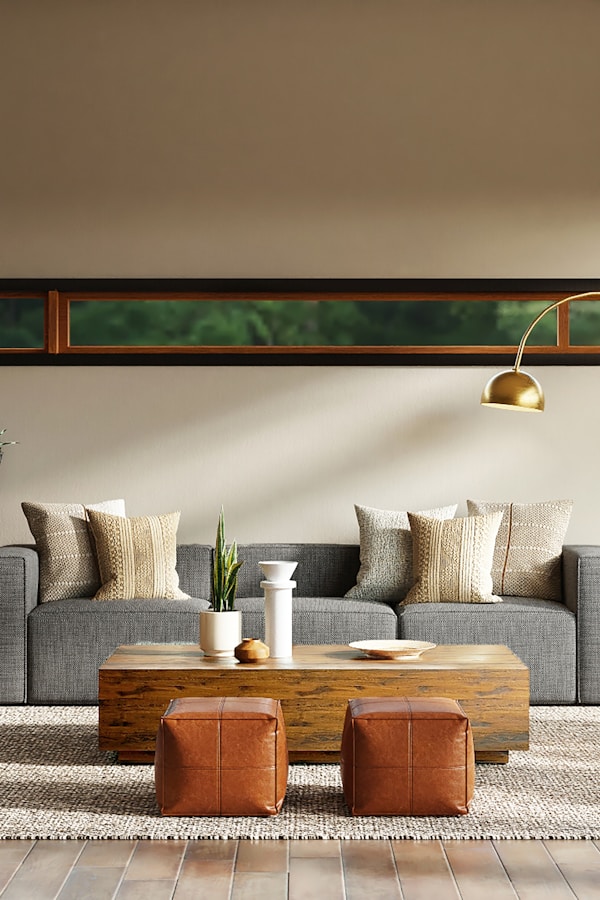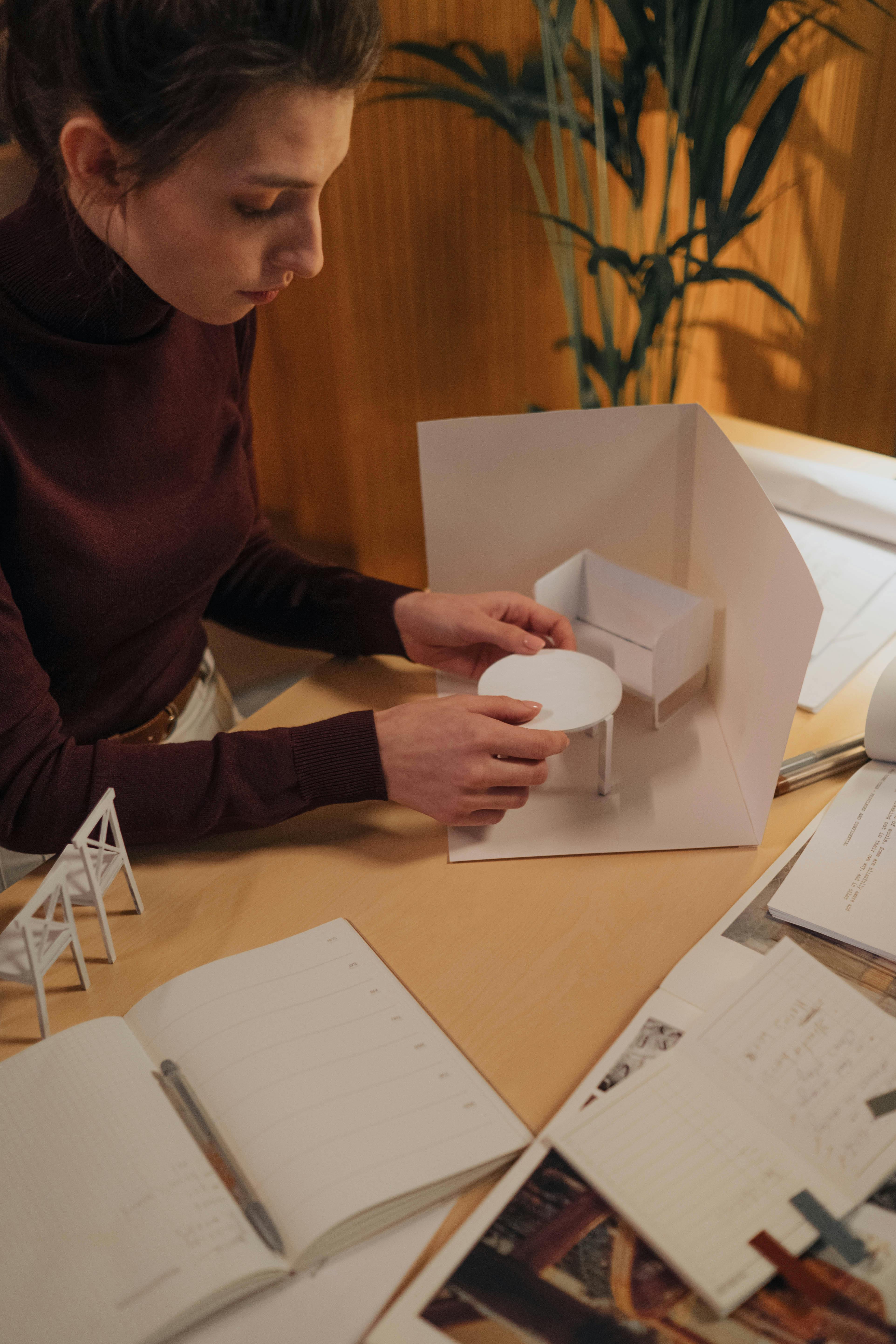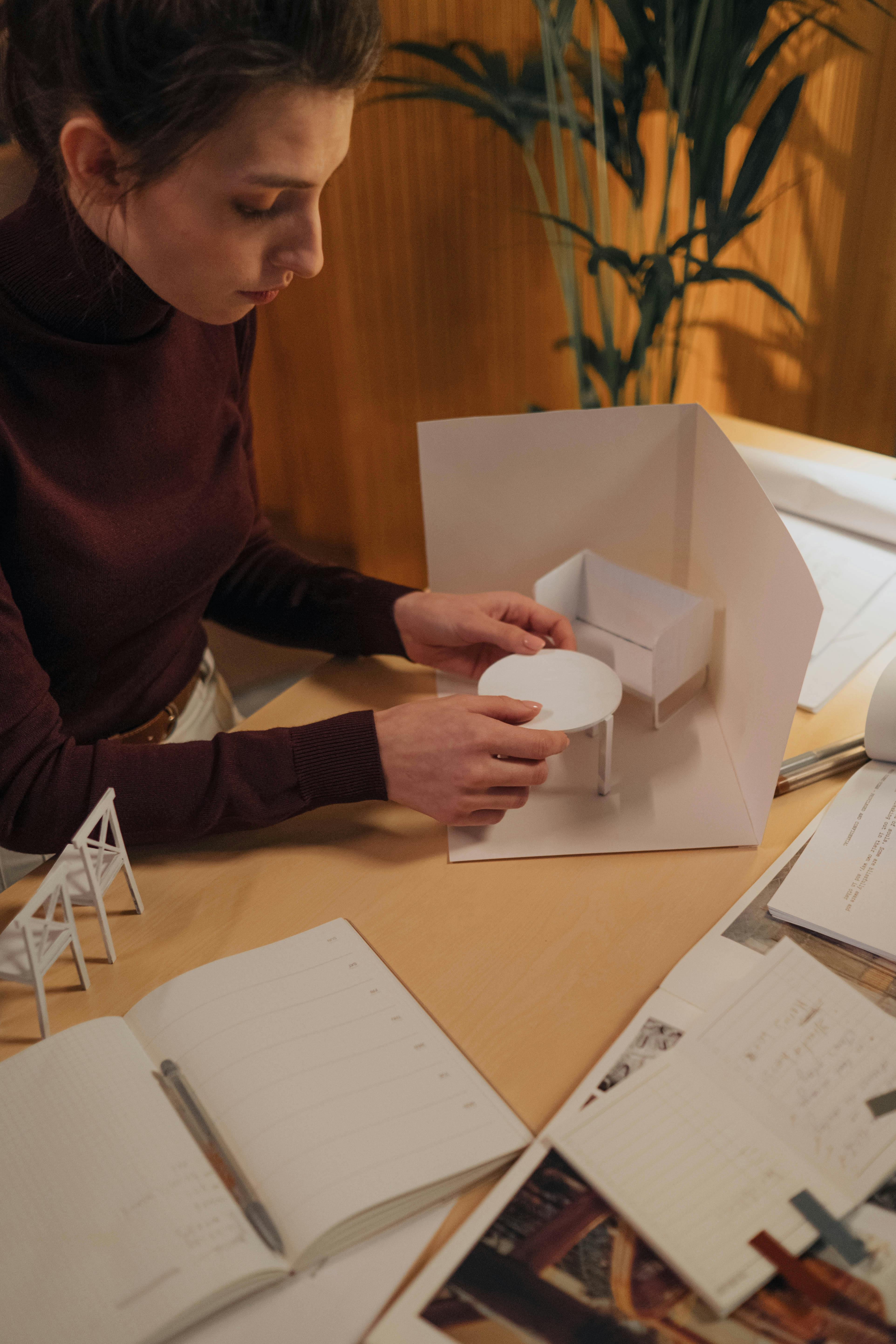
Licensing for Interior Design Businesses
Summary
Reflection Questions
Journal Prompt
Understanding interior design licensing can feel like decoding a complex puzzle. As a business owner in this creative field, navigating state regulations is often challenging. But don’t worry – we’re here to guide you through the world of interior design credentials.
The rules for running an interior design business vary widely across states. Some require a full license, while others have more relaxed requirements. This regulatory landscape can certainly be confusing.
Why should you care about these legal requirements? Understanding them provides a solid foundation for your business, helping you avoid regulatory issues and instilling confidence in your clients that you’re not just talented, but also properly credentialed.
In this article, we’ll explore the details of obtaining and maintaining your interior design credentials.
Practice vs. Title Regulation: Decoding the Interior Design Legalese

Photo by Anna Nekrashevich on Unsplash.
Interior design regulation can be as opaque as a frosted glass shower door. Let’s shed some light on this complex subject by exploring the two main types of interior design regulation in the U.S.: practice regulation and title regulation. Understanding the difference is crucial for navigating the legal landscape of our industry.
Practice Regulation: The Heavyweight Champion
In practice-regulated states like Florida, Louisiana, and Nevada, you need more than creativity and an eye for color to work independently on commercial projects. You need a license. These states view interior design, especially in commercial spaces, as more than aesthetics. It’s about ensuring safety, accessibility, and compliance with building codes.
Title Regulation: The Lightweight Contender
States like Illinois, Arkansas, or Georgia take a lighter approach. In these title-regulated states, you don’t need a license to practice interior design. However, if you want to call yourself a ‘certified’ or ‘licensed’ interior designer, you’ll need to earn that title. It’s similar to the distinction between a cook and a chef – anyone can cook, but ‘chef’ implies a certain level of training and expertise.
Why This Matters
Understanding which model applies in your state is about more than legal compliance. It’s about knowing your market, potential, and limitations. If you’re in a practice-regulated state eyeing commercial projects, you know you’ve got some studying ahead. In a title-regulated state, you might decide certification is worth the effort for the credibility boost.
Here’s a quick breakdown to help navigate this regulatory landscape:
| Regulation Type | What It Means | Example States |
|---|---|---|
| Practice Regulation | License required for commercial projects | Florida, Louisiana, Nevada |
| Title Regulation | Certification needed only to use protected titles | Illinois, Arkansas, Georgia |
At the end of the day, whether you’re dealing with practice regulation or title regulation, remember: Your talent, creativity, and passion for design are what truly matter. These regulations are simply part of the professional landscape we navigate in our pursuit of creating exceptional spaces.
Armed with this knowledge, you’re better prepared to navigate the regulatory terrain, whether you’re planning to conquer the commercial design world in Florida or make a name for yourself as a certified designer in Illinois. Your first step to success is understanding the rules of the game.
State-by-State Licensing Requirements: A Patchwork of Regulations

Photo by Ron Lach on Unsplash.
Navigating the labyrinth of interior design licensing requirements across the U.S. is far from straightforward. The licensing landscape for interior designers varies significantly from state to state, with some embracing a ‘come as you are’ approach while others impose stringent regulations.
Let’s examine the states that take their interior design regulations seriously. Louisiana, Florida, Nevada, Washington D.C., and Puerto Rico require registration for unsupervised work in commercial spaces. This includes hotels, restaurants, offices—essentially any non-residential space. If you’re not registered in these states, you can still work, but under the supervision of a licensed professional.
Then we have states with a more relaxed approach. These don’t require a license but may offer optional certification. While not mandatory, this certification can provide a competitive edge and open doors to certain projects that uncertified designers can’t access.
Each state that requires licensing or offers certification has its own set of requirements. These can include different application processes, varying fee structures, examination requirements, and continuing education obligations. For instance, California requires completion of specific education, practical experience under a licensed professional, and passing the California Council for Interior Design Certification exam.
The key takeaway? Before establishing your business or taking on a project in a new state, thoroughly research the specific requirements. These regulations can change rapidly, so staying informed is crucial. Navigating these state-by-state requirements is part of the challenge of being an interior designer, but it’s a necessary step in building a successful, compliant practice.
The NCIDQ Examination and Certification Process: Your Path to Design Excellence

Photo by Antoni Shkraba on Unsplash.
The NCIDQ Examination is the gold standard in interior design credentials. It’s the benchmark that distinguishes seasoned professionals from those just starting out in the field.
This comprehensive exam consists of three distinct parts:
1. The Interior Design Fundamentals Exam (IDFX)
This initial test assesses your grasp of design basics. It’s a thorough evaluation of your foundational knowledge in the field.
2. The Interior Design Professional Exam (IDPX)
This section delves into the intricacies of professional practice. It’s where you demonstrate your understanding of the business side of design.
3. The Practicum Exam (PRAC)
This final test challenges you to apply your skills to real-world scenarios, showcasing your practical design abilities.
Why is this certification so crucial? It’s recognized across North America (with California being the exception) and serves as proof of your commitment to public health, safety, and welfare in design. It’s not just about creating beautiful spaces; it’s about ensuring they’re safe and functional too.
Earning your NCIDQ certification significantly boosts your professional credibility. It shows clients and employers that you’re dedicated to your craft and have met rigorous industry standards.
Remember, this certification requires ongoing effort. Continuing education is essential to maintain your credentials and stay current in this ever-evolving field.
Are you prepared to join the ranks of certified design professionals? It’s a challenging journey, but the professional growth and opportunities it offers are substantial.
Education and Experience Requirements for Licensing

Photo by Ron Lach on Unsplash.
Becoming a licensed interior designer involves more than just having an eye for color or arranging furniture skillfully. It’s a journey that combines education and experience, creating a foundation for a successful career in design.
The path to licensing isn’t straightforward. It’s more like a winding road with various routes, depending on your educational background.
The CIDA-Accredited Fast Track
Graduates from programs accredited by the Council for Interior Design Accreditation (CIDA) have an advantage. These programs are considered the express lane of interior design education. After graduation, you’ll typically need about two years of supervised experience before applying for licensing. It’s intensive training that prepares you for the realities of the design world.
The Scenic Route: Non-Accredited Degrees
If your degree isn’t CIDA-accredited, don’t worry. You’re still in the game, but you’ll need more experience. Most states require three or more years of supervised work experience. Consider it an extended internship where you’re absorbing knowledge and honing your skills in real-world design scenarios.
For instance, graduates from non-accredited four-year programs might need to log around 3,520 hours of work under a licensed designer or architect. That’s approximately two full-time years of transforming concepts into stunning interiors.
| Requirement | CIDA-Accredited | Non-Accredited |
|---|---|---|
| Minimum Work Experience | 2 years | 3 or more years |
| Education Requirement | Graduation from a CIDA-accredited program | Graduation from a non-accredited program |
Documenting Your Design Journey
Here’s a crucial tip: document everything. Every project, client interaction, and design challenge you overcome. This documentation is essential when applying for your license, as you’ll need to prove your experience. It’s a professional record of your growth and achievements.
Maintain a portfolio of your work, collect letters from supervisors, and consider starting a blog about your design experiences. These records not only help with your licensing application but also provide a way to reflect on your progress and potentially create content for future professional endeavors.
The Action Plan
Ready to start your journey? Here’s a quick checklist:
- Check if your program is CIDA-accredited
- Research your state’s specific requirements
- Start logging your work hours meticulously
- Network with licensed designers who can supervise your work
- Keep detailed records of your projects and experiences
Remember, whether you’re on the fast track or taking the scenic route, the destination is the same: a successful, licensed interior design career. It’s worth every effort, from conceptual sketches to late nights perfecting designs.
Now, it’s time to put your skills into action. Your future in interior design awaits, filled with opportunities to create spaces that inspire and delight.
Business-Level Licensing Considerations for Interior Design Firms

Photo by god picture on Unsplash.
You’ve secured your individual interior design credentials – congratulations! However, if you’re planning to launch your own interior design business, there’s another layer of licensing considerations to navigate. Let’s explore this further.
Some states require interior design firms to obtain separate business licenses, in addition to individual designer credentials. These requirements serve a purpose, ensuring firms maintain proper standards and protections.
Depending on your location, business-level requirements may include:
- Maintaining licensed interior design professionals on staff
- Carrying adequate professional liability insurance
- Registering your business entity appropriately (LLC, corporation, partnership)
Additionally, most interior design businesses will need to obtain general business licenses, register for taxes, and potentially acquire specialized permits for construction or contracting work.
My recommendation? Seek professional help with this process. Consult a local business attorney or your state’s small business development center to ensure you’re meeting all requirements. You don’t want to secure a dream project only to face setbacks due to overlooked paperwork.
While these steps may seem tedious, they set the foundation for a compliant and successful business. Plus, being able to showcase your properly licensed and insured status to potential clients is invaluable for building trust and credibility.
Benefits of Licensing for Business Growth

Photo by Michael Burrows on Unsplash.
Let’s address the topic of licensing requirements for interior designers. While it might not sound thrilling, this process could be the key to elevating your design business to new heights.
Imagine you’re at a networking event, and someone inquires about your profession. You confidently state, “I’m a licensed interior designer.” That’s an instant credibility boost. It’s akin to having exclusive access in the design world, and clients definitely take notice. This is especially true for those high-profile commercial clients seeking someone with more than just an eye for aesthetics.
Licensing isn’t just about making an impression at events. It can unlock opportunities you might not have known existed. Suddenly, you’re qualified for those lucrative government contracts that were previously out of reach. It’s like discovering a hidden level in a game, except the reward is a more substantial bottom line.
Let’s consider client trust. In an industry where many claim to be interior designers simply because they can arrange furniture, having a license sets you apart. It’s a clear indicator that you’re knowledgeable and qualified. Clients appreciate this assurance, particularly when they’re investing significantly in their dream space.
There’s more to consider. Licensing often allows you to sign and seal your own design documents. This means no more relying on architects or engineers for approval. You’re in charge, leading your projects with the confidence of a fully qualified professional.
Obtaining a license isn’t a simple process. It requires dedication and hard work. But the benefits are substantial. You’ll have an expanded scope of practice that allows you to showcase your creativity in new and exciting ways.
While the licensing process might seem daunting, the outcomes are far from mundane. It’s an investment in your future, your credibility, and your financial success. In the competitive world of interior design, it’s not just a nice-to-have—it’s becoming increasingly essential.
| Benefit | Description |
|---|---|
| Professional Credibility | Having a recognized certification sets a designer apart and indicates a level of expertise and commitment to the profession. |
| Career Advancement | Certification can lead to higher-level job opportunities, promotions, and salary increases. |
| Skill Enhancement | Certification programs require ongoing education that enhances a designer’s skills and knowledge. |
| Networking Opportunities | Certification programs often provide valuable networking opportunities with industry professionals. |
Here’s a thought to consider: Interior design licensing isn’t just a formality—it’s your passport to larger projects, better clients, and a new level of professional excellence. #DesignPro
In the grand scheme of your career, licensing is a crucial element that brings everything together. While it may not be the most exciting aspect of the job, it could very well be the most valuable. So take the plunge, get licensed, and watch your business flourish like a well-designed space full of potential.
Conclusion: Set Yourself Apart with Interior Design Licensing
Navigating the maze of interior design licensing might seem overwhelming at first, but it’s an essential step in building a credible, thriving design business. Whether you’re tackling state regulations, preparing for the NCIDQ exam, or gathering the necessary experience and documentation, each effort brings you closer to professional excellence.
Licensing isn’t just about compliance — it’s about showcasing your expertise, opening doors to bigger projects, and earning the trust of high-profile clients. By investing in your credentials, you’re setting yourself apart in a competitive industry and laying the groundwork for long-term success.
So, take the next step with confidence. Your future as a respected, fully licensed interior designer is within reach — and it’s brimming with opportunity.
Want help navigating licensing and growing your design business? Join our private community for expert guidance and real-world support.









